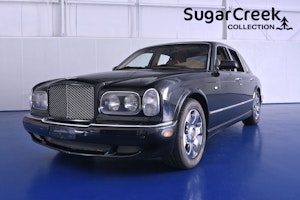Media | Articles
Three cars influenced by the Pontiac Grand Prix
The 1958 Ford Thunderbird often receives credit for popularizing the American personal-luxury car—a vehicle with sporting flair yet emphasizing luxury, style, and convenience. The 1962 Pontiac Grand Prix then reconfigured those elements into something that was relatively affordable at under $3500. And especially with the restyled and restrained 1963 model, Pontiac demonstrated that one did not need to spend $4300 or more to get a coupe with dramatic style. Grand Prix sales topped 72,959 that year, making other manufacturers to sit up and take notice. Here are some of their responses:
1964-65 Oldsmobile Jetstar I

Sure, the 1961 Starfire convertible and its companion hardtop (introduced for 1962) were personal-luxury vehicles, but they were premium-priced chariots approaching Thunderbird territory. Oldsmobile felt there was an opportunity to introduce a “brilliant new sports coupe in the medium-price class”—enter the 1964 Jetstar I.
With a concave backlight borrowed from the Starfire, the Jetstar I came standard with a 345-horsepower 394 Starfire V-8 backed by a column-shifted three-speed manual (with Hydra-Matic Drive with T-stick control optional), 3.42 rear axle ratio, chambered dual exhausts, and Moroceen bucket-seat interior with console—basically, a decontented Starfire. Jetstar I buyers nonetheless could enjoy the same frills and thrills as the Starfire due to the “sweetest handling, most attractively priced sports coupe on the road,” sharing the same option list.
A newly modern and massive full-size “Rocket Action” Oldsmobile was introduced for 1965, with two-door hardtops featuring a contemporary semi-fastback roofline. (Except the Jetstar I and Starfire, which continued to use the concave backlight.) Added distinction for the Jetstar came via simulated air extractors behind the front wheels. Under the hood was a new 425 Starfire V-8 with 370 horsepower, which now was available with a four-speed in addition to the three-speed and automatic transmissions. Despite standard power that completely dwarfed the Grand Prix’s, Jetstar I sales fell from 16,084 to 6552 for 1965, so Oldsmobile decided to call it a day. Production ended after the 1965 model year.
Marketplace
Buy and sell classics with confidence
1965 Dodge Monaco

With an all-new full-size product portfolio for 1965, Dodge’s C-body consisted of the Polara, Custom 880, and the brand-new Monaco two-door hardtop, which it called “the limited edition Dodge for the man with unlimited taste.” The interior was where the Monaco truly excelled: standard Rattan-backed soft saddle grain vinyl or cloth-and-vinyl front bucket seats, complementary integrated bucket rear seats, Rattan inset door panels, full-length center console with rear ash receiver and lighter, and premium touches like padded dash, left-hand remote mirror, full carpeting, and “sporty translucent triple-spoke steering wheel.” Outside, the Monaco stood out from run-of-the-mill Dodges thanks to a distinctive and clever taillight design featuring a full-width lamp/reflector motif with a floating diecast bar inlay.
Standard was a 315-horsepower 383 4bbl. backed by a three-speed, with TorqueFlite and four-speed optional; also available was a 413/340 and 426/365, the latter which came with a four-speed standard. Final production for the Monaco totaled 13,096, not including Canadian models, which were a different breed.
Like many manufacturers, Dodge took the equity of something good and watered it down. The following year, the 1966 Monaco became a full-line series replacing the Custom 880. The former Monaco became the Monaco 500, but it suffered from cost-cutting and lost some of the touches that made it truly special.
1967-68 Mercury Marquis

Mercury became “the Man’s Car,” in 1967. While the advertising campaign was unlikely to win the heart of Betty Friedan, the rest of the car-buying public found it difficult to resist the charms of the brand-new Marquis. Also new for 1967 was the car’s two-door hardtop model, dubbed “the most handsome interpretation of the Man’s Car.”
All Marquis were trimmed with standard levant-grain vinyl Oxford Roof and five full-length stripes running lower-body side moldings to the rocker panels. Inside, Twin-Comfort Lounge seats (each with individual adjustments and armrests) and wood-grain steering wheel showed the Marquis was “the kind of car every man promises himself ‘some day.’” The Marauder 410 with 330 horsepower was standard, with the 345-horse Super Marauder 428 as the only upgrade, both available with either Select-Shift Merc-O-Matic or four-speed. Only 6,510 were built for 1967, with the ’68 (now with standard 390/315) falling to 3965.
While the Marquis was seemingly more luxury than sport, the Grand Prix had progressed in that direction too. For 1969, in a bid to get back to its roots, the Grand Prix was drastically redesigned on a stretched midsize platform, influencing a whole new generation of 1970s personal-luxury coupes like the Chevrolet Monte Carlo, Chrysler Cordoba, and, ironically, the Mercury Cougar, among others. That same year, Mercury gave the Marquis full-line status, replacing the Park Lane as the brand’s top series. The new Marauder somewhat filled the role of Mercury’s personal-luxury chariot through 1970.









